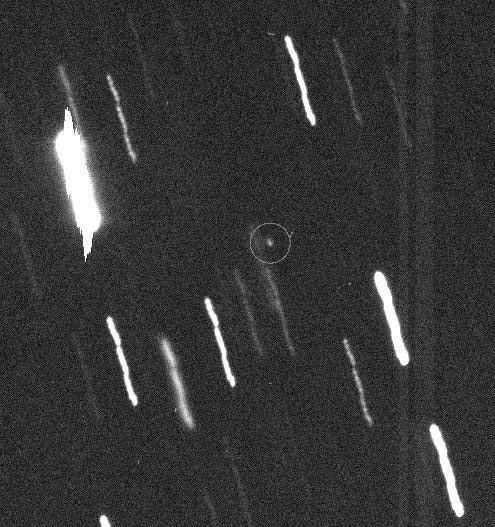Asteroid Hitting Earth: Do We Have To Worry About Space Rocks Crashing Our Planet?

The asteroid Apophis seems like a friendly rock speeding through the space near Earth for now, but later on in its relationship with our planet, it might strike down to the surface with devastating results.
It may never happen, but it’s not out of the realm of possibility, according to a report on Astrowatch.net. After all, scientists were briefly worried in 2004 about that asteroid striking Earth, before further calculations showed there was nothing to be alarmed about. It has passed through our space neighborhood since then without incident, but Apophis has future flybys scheduled and while the next couple are going to go pretty smoothly, others may not be as pleasant.
Read: 6 Dangerous Objects Close to Earth
NASA projects that Apophis will come by in 2029 and will return again in 2036. In the former journey, the closest the asteroid may get to Earth a little less than 20,000 miles, which is closer than some of our satellites. That’s a pretty close pass to the planet, and will put it into the record books as the closest one of its size. It will appear “to the naked eye as a moderately bright point of light moving rapidly across the sky” over the mid-Atlantic area.
The latter flyby, in 2036, will be from much farther out, several million miles away. NASA scientists finalized calculations a few years ago that showed there was no danger during that pass.
“The impact odds as they stand now are less than one in a million, which makes us comfortable saying we can effectively rule out an Earth impact in 2036,” Don Yeomans, manager of NASA’s Near-Earth Object Program Office at the Jet Propulsion Laboratory, said at the time. “Our interest in asteroid Apophis will essentially be for its scientific interest for the foreseeable future.”
But the future beyond that is wide open.
“We can rule out a collision at the next closest approach with the Earth, but then the orbit will change in a way that is not fully predictable just now, so we cannot predict the behavior on a longer timescale,” Alberto Cellino, of the Observatory of Turin in Italy, told Astrowatch.net.
Apophis is between 700 and 1,100 feet long, more than large enough to do substantial damage if it were to crash down onto the Earth. But even without Apophis, our planet is still vulnerable to a deadly asteroid. They pass by Earth all the time, sometimes more than one in a day. Usually they are relatively small and far out, but there are exceptions. For example, NASA is predicting an asteroid between 800 and 1,800 feet across flying by on June 27, from a distance that is equivalent to about a tenth of the distance between the Earth and the sun. On July 23, an asteroid between 130 and 300 feet long will pass by at about three lunar distances — in other words, three times the distance between Earth and the moon. NASA’s publicly accessible and searchable database of near-Earth objects’ close approaches is a treasure trove for doomsayers.
Read: Meteorite As Old As Earth Crashes Down Near Amsterdam
And objects do land on Earth from time to time, even though they are small. Just earlier this year, a meteorite the size of a fist and weighing about a pound crashed down to the surface, punching a hole through a shed roof in the Netherlands right before it hit the ground. If anyone had been standing in its path, that person would have been killed.
A geologist at Holland’s Naturalis Biodiversity Center hypothesized that the rock that formed the meteorite shook loose from the asteroid belt between Mars and Jupiter.
Still, experts are not sweating it.
“There are no known asteroids on a certain collision course,” former JPL researcher Alan Harris told Astrowatch.net. “Because of imperfectly known orbits, there are some that have a low probability of impact in the distant future, but at present none of the known asteroids has a probability of impact that exceeds the random chance of an undiscovered asteroid of the same size hitting the Earth sometime between now and the possible impact date of the imperfectly known object.”
© Copyright IBTimes 2024. All rights reserved.





















